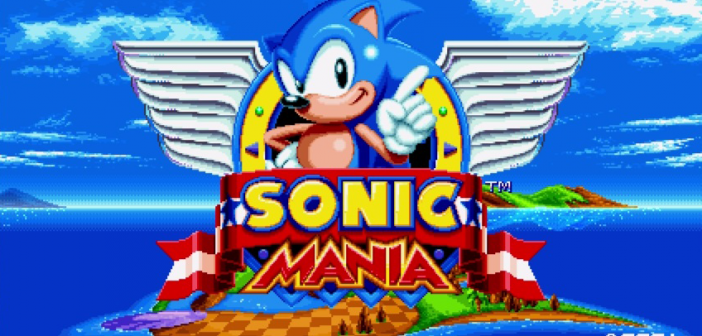In 1991, SEGA were in desperate need of a mascot to help address their poor sales figures against gaming giants Nintendo. The result? A blue anthropomorphic hedgehog with the ability to run at supersonic speeds as he looks to liberate his home from an evil scientist and his robotic inventions. Over two decades later, Sonic the Hedgehog is one of the most-loved video game characters on the planet, with his series selling over 80 million copies worldwide.
The premise of Sonic’s early titles was a simple one, yet provided SEGA with nearly un-paralleled success in the 16-bit video gaming era. The player simply assumes control of Sonic and races through stages – split into ‘acts’ – at breakneck speeds, collecting rings and items, whilst also liberating innocent animals from their robotic cages and seeking out the seven mysterious Chaos Emeralds to wield in the fight against Dr. Robotnik (now “Eggman”). It sounds brutally simple compared to the complex titles that enjoy similar success in the modern arena.
Which brings us on to Sonic Mania. Announced as part of Sonic’s 25th anniversary celebrations, SEGA is revisiting the character’s roots in a brand-new title, with a selection of classic levels remastered alongside a host of newly-created ‘zones’, some inspired by rejected ideas from the original games back in the early 1990s. Players will be able to experience nostalgia at its finest as Sonic, Tails and Knuckles – 3D characters now for many years (the less we say about Sonic the Hedgehog 4, the better), are once more reduced to sprites on a side-scrolling platform game. I
It wouldn’t be an exaggeration to say that Sonic is finally ‘coming home’ after a prolonged period away. Sure, some of his 3D titles have been exceptionally good – Sonic Adventure 2, Sonic Heroes and Sonic: Lost World all have their merits – but strip away the beautiful simplicity of this series and you lose its soul. Put it another way – if Pokemon Colosseum had been the opening title in that franchise, would it be the global phenomenon it currently is?
It’s more than just the games. In his early years, Sonic spanned a successful comic book series and several television programmes alongside his groundbreaking video game success. Excluding the JETIX-aired Sonic X series, the “blue blur” has scarcely graced the same heights on other platforms since. In using Mania to re-visit the roots of their flagship character in an appropriate fashion, SEGA stand to enhance the franchise – the true mark of a successful anniversary.
And it’s not that their previous attempts to bring Sonic’s early adventures to a fresh platform haven’t been well received – all the 16-bit games have been available as downloads on Wii consoles or via Android phones since the late 2000s – but nothing says commitment and care like a brand-new title.
I started playing Sonic when I was barely old enough to attend school. Some of my earliest and fondest memories of childhood are spending hours hooked to a SEGA Megadrive (and later Game Boy Advance, Playstation 2, Xbox, Gamecube, Wii, Playstation 3 and Xbox 360) collecting rings, absorbed by the simplistic sense of adventure, put to wonderfully retro music and graphics that, by today’s standards, are appalling – and yet somehow in so many ways, the best.
It’s been quite a few years since any new release in the Sonic franchise has been an exciting prospect, which has only served to heighten the anticipation for Mania – it wouldn’t be an exaggeration to say I’m on edge.
Welcome back, Sonic. As you’d have told me during the cartoon series when I was younger (or shamelessly re-watching it as an adult with responsibilities) this next installment is set to be “way past cool”.




